- News
- Reviews
- Bikes
- Accessories
- Accessories - misc
- Computer mounts
- Bags
- Bar ends
- Bike bags & cases
- Bottle cages
- Bottles
- Cameras
- Car racks
- Child seats
- Computers
- Glasses
- GPS units
- Helmets
- Lights - front
- Lights - rear
- Lights - sets
- Locks
- Mirrors
- Mudguards
- Racks
- Pumps & CO2 inflators
- Puncture kits
- Reflectives
- Smart watches
- Stands and racks
- Trailers
- Clothing
- Components
- Bar tape & grips
- Bottom brackets
- Brake & gear cables
- Brake & STI levers
- Brake pads & spares
- Brakes
- Cassettes & freewheels
- Chains
- Chainsets & chainrings
- Derailleurs - front
- Derailleurs - rear
- Forks
- Gear levers & shifters
- Groupsets
- Handlebars & extensions
- Headsets
- Hubs
- Inner tubes
- Pedals
- Quick releases & skewers
- Saddles
- Seatposts
- Stems
- Wheels
- Tyres
- Health, fitness and nutrition
- Tools and workshop
- Miscellaneous
- Cross country mountain bikes
- Tubeless valves
- Buyers Guides
- Features
- Forum
- Recommends
- Podcast
review
£468.98
VERDICT:
A big step forward from the previous version, with excellent performance and 105 looks
Weight:
1,030g
Contact:
At road.cc every product is thoroughly tested for as long as it takes to get a proper insight into how well it works. Our reviewers are experienced cyclists that we trust to be objective. While we strive to ensure that opinions expressed are backed up by facts, reviews are by their nature an informed opinion, not a definitive verdict. We don't intentionally try to break anything (except locks) but we do try to look for weak points in any design. The overall score is not just an average of the other scores: it reflects both a product's function and value – with value determined by how a product compares with items of similar spec, quality, and price.
What the road.cc scores meanGood scores are more common than bad, because fortunately good products are more common than bad.
- Exceptional
- Excellent
- Very Good
- Good
- Quite good
- Average
- Not so good
- Poor
- Bad
- Appalling
I reviewed the previous 105 hydraulic levers (RS505) back in 2016; that was the first time Shimano had offered hydraulic disc brakes at the 105 level. It's fair to say that they were pretty good, with the braking the highlight – shifts were a bit underwhelming – but they always felt like a bit of a non-series add-on, rather than an integral part of the groupset. They didn't look the same, and the shifting performance was below that of the mechanical levers. Leap forwards a couple of years, and the new 7000 series 105 groupset has really impressed me in its mechanical, rim brake incarnation: it really is the best value performance groupset out there. But has the new hydraulic system, the R7020 lever and the R7070 calliper, upped its game too? Well, in a word: yes. Significantly, if you want another word. They're still quite expensive as an upgrade, but definitely one to look out for if you're in the market for a new disc-braked road bike.
- Pros: Great braking, great shifting, easy to set up
- Cons: Expensive as an upgrade
First things first: for nearly all the riding I do, hydraulic disc brakes are the best brakes. They're very powerful, and that power is accessible with much less lever force than rim brakes or mechanical discs, making modulating the power easier. On top of that, they work reliably in the summer on long lazy descents of Alpine cols, and they work reliably in the winter in the freezing rain when your bike is covered with sludge. They self centre, so the only regular maintenance job is swapping the pads out when you've worn them down. And talking of things wearing down, you're braking on a hardy steel rotor, not your precious carbon or alloy rim surface, which round here can be eaten through in a winter or two of wet, gritty riding.
> Find your nearest dealer here
There are some downsides: they can be fiddly to set up (although these 105 brakes weren't; more on that in a bit), mud can sometimes make them a bit noisy and wobbly rotors can too. But overall, yes please on the whole hydraulics thing for me. With some provisos: I don't have them on my race bike, and for now I can't really see the point of them there. But that's a can of worms I'll keep in the cupboard for the purposes of this review.
The new R7020 lever is a full redesign, it's nothing like the outgoing lever. The shape is very much based on the mechanical lever, with the same lever design and a similar hood profile with the textured finish for better grip in the wet. The body of the hood is a bit bigger, especially at the bottom where the hose exits the lever, but it doesn't have the annoying bump that the RS505 lever did: it's a much better overall shape. The extra width of the lever at the bottom meant that the bottom of the hood sat away from the bar tape a bit; it was noticeable close up but not really an issue.
Setting it up
Fitting the brakes was simplicity itself, if you discount the bit where I had to route the hose through the down tube of the Kinesis Tripster ATR V2 I was fitting them to. The brakes come with the hose attached, and full of mineral oil; there's a seal at the end and an anti-compression insert already fitted. That's fine if you don't want to cut the hose to length, but you will: if they're too long for my 60cm Tripster with a flared bar then they'll be too long for your bike too, most likely. That means rescuing the insert from the cropped-off end and re-fitting it, but that's easy enough to do.
The lever is also full of oil, with a yellow stopper in the cable port. To seal the system you simply remove the stopper, undo the cable port, thread the hose through the port and the compression olive that's inside, put everything back together and tighten it up. A bit of mineral oil can escape when you're doing this, so wrap a rag around the bottom of the lever to make sure it doesn't drip on your rotors. Because that's A Bad Thing.
The callipers are flat mount; Shimano doesn't offer a post mount option (and didn't with the last version either). That means they won't fit some older bikes (for example, my V1 Tripster ATR that I was originally going to fit them to), although you could get the levers and some post-mount callipers. You can fit flat-mount callipers to some post-mount frames – I've seen it done with a custom bracket – but it wouldn't work with the V1 ATR because of the design of the disc mount.
Flat-mount callipers are pretty easy to set up assuming that the frame and fork have been faced correctly and are accurately aligned with the rotor. You don't get as much margin for adjustment as you do with post mount, so a misalignment usually means you'll need to get your surfaces prepared. Anyway, I didn't have any trouble.
Setting up the brakes was pretty easy by eye, and getting the rotors running with no singing or rubbing was easy enough; one of the two rotors needed a tweak to make it run true.
And that was that. In spite of cutting the hoses and mucking about with the inserts, and in spite of a schoolboy error getting the hose run wrong the first time and having to re-open and re-seal one lever, everything worked exactly as it should, first time: no bleeding necessary.
Should your system require it, bleeding isn't hard: there's a bleed port under the top of the hood, and it's simply a case of pulling back the rubber, fitting a funnel and pushing mineral oil through the system from the calliper end until all the air is flushed out. It's a five-minute job, and about as easy as a hydraulic bleed gets. The Shimano bleed kit costs about £25 but cheaper options are available too.
The R7020 levers came fitted with a gear cable, but fitting and removing the cable is simple; the levers share a similar design to the mechanical ones. The cable just pokes through the body of the lever when it's in the lowest gear, and there's a removable plate to make fiddling it round the tight radius to the exit port a whole lot easier. There's a specific cable end with a ridge on one side that fits into the lever body for the best connection. Cabling up the mechs is exactly the same as it would be with the full mechanical levers.
The callipers are similar to the last incarnation. The one immediately noticeable difference is that you now get the Ice Tech pads with heatsink fins, which help to dissipate braking heat. Other than that, the design doesn't really seem to have changed: a single piston each side, the hose exiting on the inside of the calliper to improve heel clearance, and a bleed port at the very bottom of the system that makes bleeding simple.
Braking
So they're fitted and bled (should you need to) and off you go. Let's deal with the braking first. These brakes are on a Tripster frame that previously had a SRAM Force groupset on, and for the past couple of months I've been running mechanical 105 with TRP Spyre brakes. Both systems have their plus and minus points: Force has powerful brakes that are pretty fiddly to bleed and position, and the Spyres are super-easy to set up but don't have the same kind of easy-to-modulate power that you get from good hydraulics. The 105 brakes are the best of both worlds. They work brilliantly out of the box, and they're almost entirely fuss-free.
The first round of Shimano disc brakes had some issues with the bite point, but that's long been solved. These brakes bite when you'd expect them to in the lever travel, and from there there's masses of stopping power available as and when you need it. The reach is adjustable, but there's also a new, smaller lever (R7025) that should be ideal for those with smaller hands. The amount of effort you have to put in to control your speed on the steep, loose back road descents round here is genuinely a revelation compared to rim brakes or mechanical disc brakes.
Once you've got used to the bite point and the amount of squeeze you need, they make difficult roads simple: that's the reason good hydraulics are the best brakes. There are roads I ride from home that I will avoid on bikes with average brakes because they're really not a great deal of fun: steep descents, sharp turns, greasy surfaces. I was seeking those roads out to test the capabilities of the 105 hydraulics, and they didn't disappoint. They're so easy to feather and control, even when braking from the hoods, that they'll instantly put a smile on your face. Go down to the drops and settle in for a technical descent and they're even better. It's so easy to scrub off a bit of speed that it becomes second nature; going back to a bike with average brakes is a bit of a shock.
In the wet I found that the 105 brakes outperformed the SRAM Force ones I've been using for the last couple of years. Not so much in the amount of power – they're broadly similar – but more that they're less susceptible to squeaking and chattering when wet. It's still possible to make them grumble a bit when you're on filthy lanes and they get grit and mulch between the pads and the rotors, but it was noticeably less of an issue and overall they were much quieter. I was using the same TRP rotors that I'd previously used with the SRAM brakes.
In terms of actual control over your speed, hydraulic discs are by some margin the best brakes to be using when the weather is foul. They're predictable and reliable, and the braking performance isn't dictated by whatever you're riding through at the time. This, really, is where they earn their corn. My race bike, with 105 dual pivot callipers and wheels with an alloy braking surface, is broadly comparable in the dry, although the amount of effort required is a touch higher. In the wet, though, the discs are better by a good margin. And if you're comparing the performance of disc brakes in the wet with rim brakes on carbon in the wet, you're talking night and day.
Shifting
Shifting performance from the levers was pretty much indistinguishable from the R7000 levers I tested as part of the full groupset. I was using a long-cage R7000 rear mech and an older 105-5800 front mech, and both gave predictable and crisp shifts, all the time.
The action of the lever has been improved, with a shorter throw making the upshift easier, especially from the drops. I was using the levers on a flared Ritchey VentureMax bar which angles the lever outwards and – for me – makes the shift easier still.
The shifting is a huge improvement over the previous RS505 lever, where it was the weak point. Here, you're getting what feels like a proper performance groupset, both in the shape of the lever and the quality of the shift.
Conclusion
Do you need a bike with hydraulic discs? No, you don't need one. But like pneumatic tyres and freewheels and clincher rims and indexed shifting and brifters and electronic groupsets, hydraulic disc braking is a thing that's generally better than the thing that came before it. Remember when disc brakes weren't going to catch on in mountain biking? In cyclo-cross? They did. Because they're better.
If you're looking to get a bike with discs then absolutely look for one with these discs. The R7000 groupset as a whole is excellent, and this time the levers and brakes are as good as the rest of the kit, rather than feeling like an add-on. If you're looking to change from a mechanical setup then they're definitely worth a look as an upgrade, although at over £450 a pair at full retail (less if you shop around) they're still a reasonably expensive one.
Verdict
A big step forward from the previous version, with excellent performance and 105 looks
road.cc test report
Make and model: Shimano 105 R7020 hydraulic disc brakes
Size tested: Standard
Tell us some more about the technical aspects of the product?
Great ergonomics cascaded from ULTEGRA
Greater reach adjust range
Redesigned internal shifting unit
Greater rider control in all conditions
Quick and intuitive rear shifting operation
Same light shifting operation as top tier systems
Lighter front shifting when paired with FD-R7000 (compared with previous generation)
Rate the product for quality of construction:
9/10
All good, well packaged and easy to fit and set up.
Rate the product for performance:
10/10
Braking and shifting are both excellent.
Rate the product for durability:
9/10
Mechanical parts and hydraulics are both pretty well proven; alloy levers are heavier but sturdy.
Rate the product for weight (if applicable)
7/10
Around 200g heavier than rim brakes, depending on rotor choice.
Rate the product for comfort (if applicable)
8/10
Lever shape and hood profile are a big improvement over the RS505 lever.
Rate the product for value:
6/10
They're not *bad* value, but in the real world you can have a whole R7000 mechanical groupset for the price of these levers and callipers.
Tell us how the product performed overall when used for its designed purpose
Really well: great braking and shifting in all conditions.
Tell us what you particularly liked about the product
Pretty much everything is an improvement over the last system.
Tell us what you particularly disliked about the product
Only the price, really.
How does the price compare to that of similar products in the market, including ones recently tested on road.cc?
They're comparable in price to SRAM's lever/brake systems at the Apex/Rival level, but those seem quite expensive too bought on their own.
Did you enjoy using the product? Yes
Would you consider buying the product? Yes
Would you recommend the product to a friend? Yes
Use this box to explain your overall score
These are excellent shifters and brakes. As an upgrade they're pretty expensive given they're only at 105 level, but that's really the only thing that marks them down.
About the tester
Age: 45
I usually ride: whatever I'm testing... My best bike is: Kinesis Tripster ATR, Merida Scultura
I've been riding for: Over 20 years I ride: Every day I would class myself as: Experienced
I regularly do the following types of riding: road racing, time trialling, cyclo-cross, commuting, touring, club rides, sportives, general fitness riding, fixed/singlespeed, mountain biking, Mountain Bike Bog Snorkelling, track
Dave is a founding father of road.cc, having previously worked on Cycling Plus and What Mountain Bike magazines back in the day. He also writes about e-bikes for our sister publication ebiketips. He's won three mountain bike bog snorkelling World Championships, and races at the back of the third cats.
Latest Comments
- Johnny Rags 1 hour 35 min ago
It would be nice if there were more lights on the market which mounted somewhere other than on the seatpost. Not all of us have half a yard of...
- Bungle_52 2 hours 44 min ago
This was a failure to give way at a roundabout so although it was relatively straightforward to anticipate and avoid there is traffic law to...
- chrisonabike 2 hours 52 min ago
Ah - I have now read Wikipedia on loons, and perhaps I can understand their objections:...
- wtjs 4 hours 4 min ago
she questioned what Police Scotland is doing to "deter dangerous driving and protect cyclists"...
- wtjs 4 hours 14 min ago
I've got a few reports coming up to one year where I've been told that they will take action but I don't know what action yet. I'll let you know...
- chrisonabike 4 hours 27 min ago
I feel Flintshire Lad's response - "A LABOUR councillor (candidate)!"...
- Sredlums 6 hours 6 min ago
Haha, that my pet peeve....
- stonojnr 6 hours 46 min ago
I'm not sure the UCI worlds are on the protected sports list, as surely CX & MTB would be shown too, the Beeb probably just acquire it as part...
- bikeman01 7 hours 27 min ago
Re-deployed on Twitter duty?






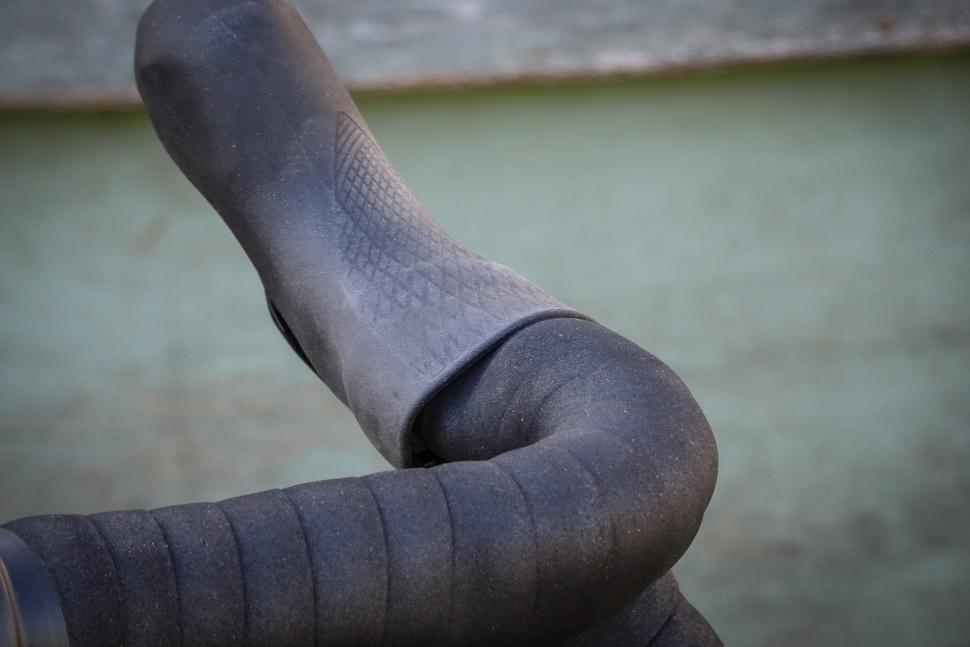
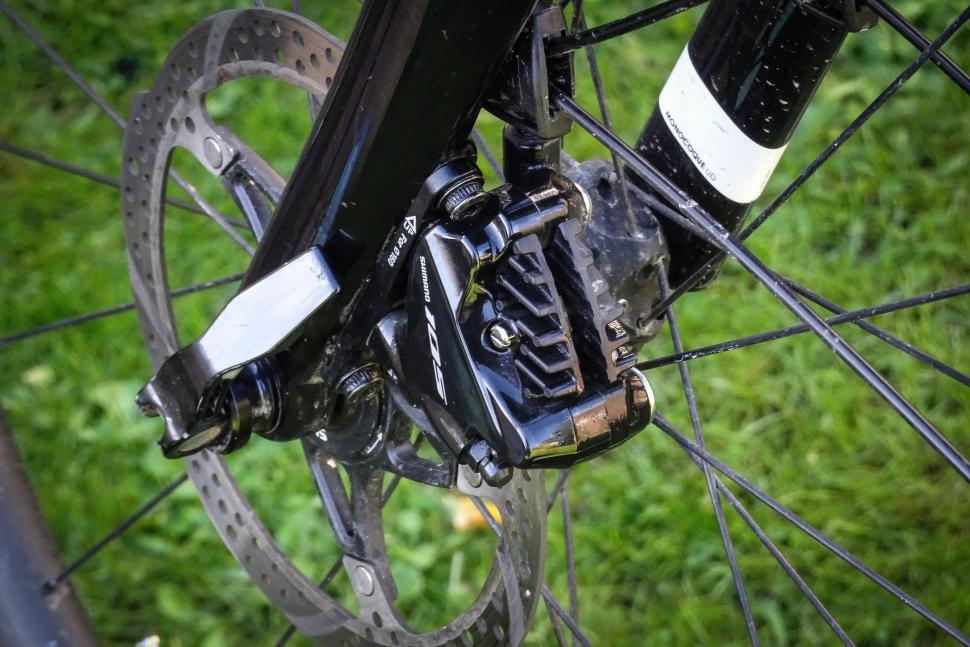

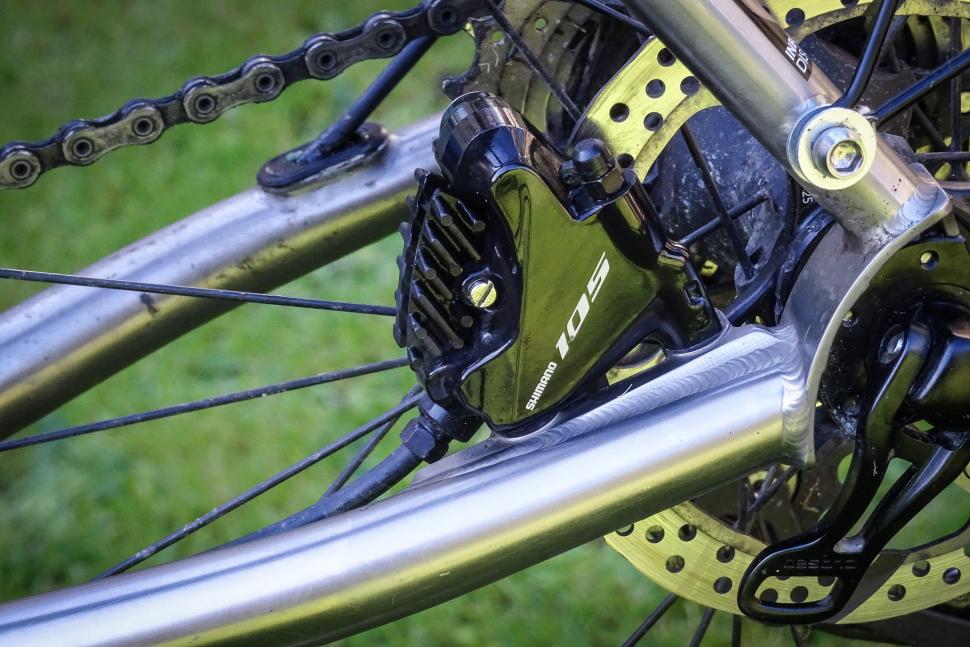
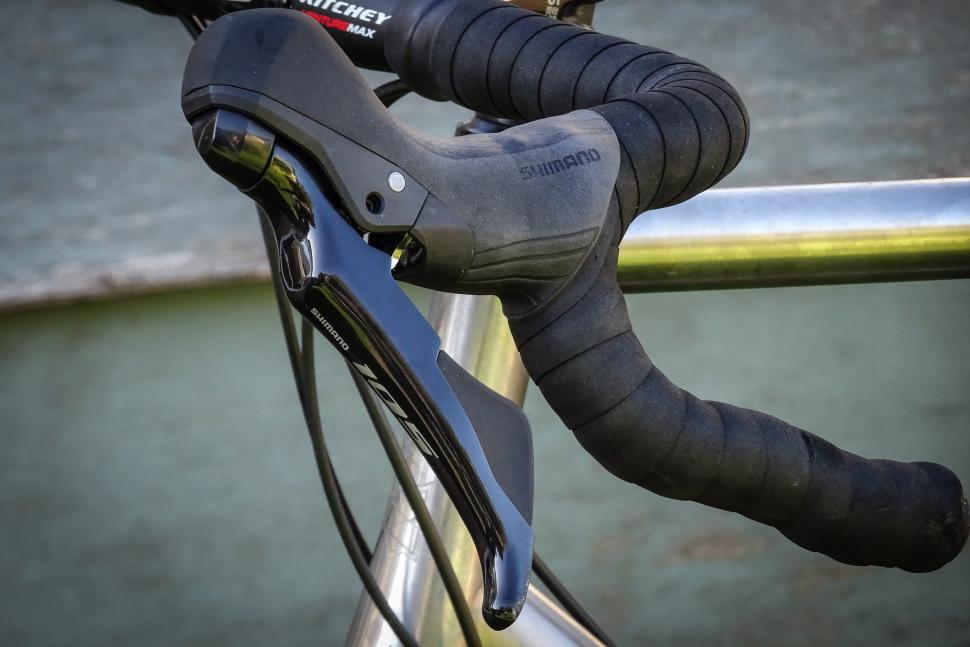

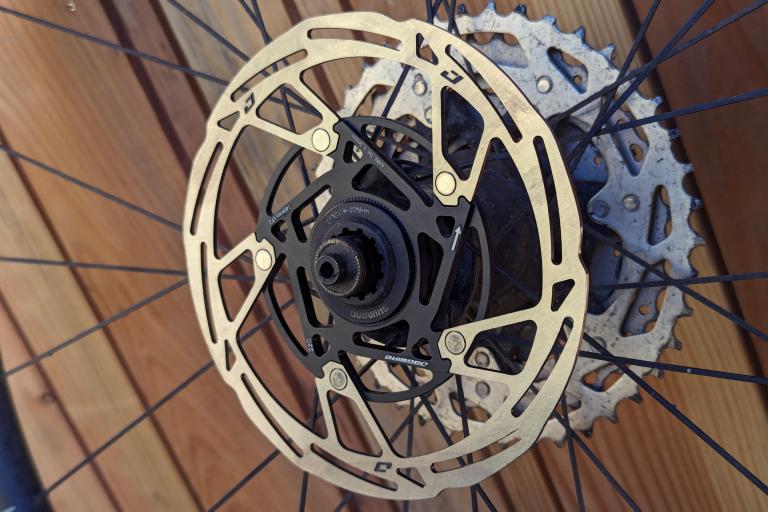
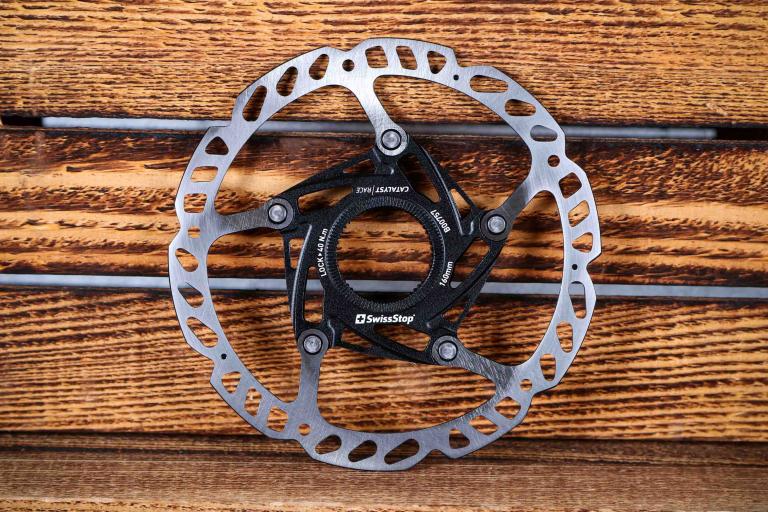

Add new comment
19 comments
Could these be used with a 10-speed Tiagra 4700 drivetrain? The Tiagra-level hydros are (a) expensive and (b) based on the old 105 design with the huge reservoir on the lever.
Would it just be a question of using the limit screws to prevent the 11th click doing anything? The pull ratio is the same.
i think in theory yes, because the pull ratio matches. i don't know anyone that's tried it
More seriously ugly Shimano shifters. No doubt better than the last - those should never have made it past drawings.
Don't normally like to get involved in this argument, but I agree here. Every report/article I've read about the R7020/8020/9120 raves about how much more compact the STI levers are compared to the previous generation, but I still find them hideously bulky and ungainly in the hands...it seems as though what has been lost in terms of the "bullhorn" bulk that was at the top of the shifter before, is now just an all round fat feeling shifter in general. Probably still better looking than SRAM's efforts, but that's not saying much. Campagnolo's hydro shifters are streets ahead in terms of ergonomics (in my humble opinion).
Indeed they are, but having just experienced my second Campagnolo lever failure (first one was broken out of the box and entailed a too-long warranty claim, second one has broken after three months of use), I'm starting to lose faith.
Very worth checking the sales and shopping around, I managed to get myself Ultegra R8020 cranks, levers, mechs and brakes for the same price as the R7020 equivalent...
Nice to see that the "spinning discs of death" type comments/idiocy have gone away.
Have I missed something? People saying lever play (I assume bite point) gets close to the bars when the pads need changing. Why? Is there no oil resevoir in these disc brakes?
Yes we're talking bite point.
Its absolutely tiny the reservior. There is extra travel as the pads wear, so its a good indicator to pad thickness. Same occurs on motorcycles
Ive gone through a set of metal pads with a weeks tour in the Alps/Canary Islands. They are not worn out, but lever play has got near the handlebars
Quick question, are the new levers/shifters still compatible with the old RS505 (post mount) callipers?
I.E if you had the older "105" range of hyro's whether you could buy the shifters separately to get the same benefits of the new better designed levers?
I would imagine so. I can't see the activation ratios (or whatever its called with hydraulic brakes...) being significantly different.
There's a massive compatibility section on the Shimano website somewhere, I imagine the answer will be on there somewhere or soon will be.
Yeah some good tips on here, thanks for that. Interestingly I don't like my levers to bite straight away, I like a bit more travel in them before they're on. I find that better when you're in the drops. it's how I set up my rim brakes too.
I do find it's the wet gritty rides that eat through pads. ask anyone who's taken organic pads to a muddy CX race
More great tips, cheers. How do people go through pads so fast? My 805 calipers came with the -04 pads, metallic I think, and they're basically still brand new at 1,500 miles. Mind you, they are on my summer bike and don't get much bad weather abuse.
not sure but recently hired a bike in the french alps with ultrega disk brakes and the shop was pretty insistent I remember to bring it back midweek to have them check the pads - I normally ride with disks (BB7, hy/rds, XT, SLX etc) and guess I don't drag them as not a problem though do keep an eye on them - guess bit like skiing cut the speed at the right place
My new Kona has them and just magic. My old specialize diverge has the old ones. Can Notice the better feel and the down shifting lever is tighter but both excell in braking. Can see any need for ultegra as they are faultless
Just a quick tip for bleeding these brakes when you install them. When I fitted my 685/805 brakes, they were a REAL pig to bleed. In the end, the way that worked was to screw the reservoir to the top of the lever and fill it with fluid. Then attach a length of tubing to a syringe and connect it to the bleed nipple on the caliper. Retract the plunger on the syringe so you're creating a decent vacuum and then crack the nipple on the caliper. When I did it, there was a huge surge of bubbles sucked from the caliper and the brakes finally felt good. Do the same thing again after a few months and you'll get another small swoosh of bubbles out and the levers will feel ever better.
Never heard of this one Mr Guy, but it sounds logical and I shall try it the next time I'm in bleed mode.
Thats is how you're supposed to do it. I tend to push the fluid up from the caliper with a syringe. But will reverse the process once/twice to ensure all air bubbles are out.
The important step to get a firm lever and very little travel before the bite. Cover the new brake pads with cling-film and place one piece of paper(thin) behind one pad.
DONT USE THE SPACER SHIMANO SUPPLY-(its too wide)
Once you have finished bleeding, replace the top cap, inject a little fuild from the bottom and whilst applying this pressure lock off the bleed nipple.
Remove cling-film and paper, you should have pads very close but still allow rotor to turn smoothly. If the pads are binding, crack open the top reservoir cap for a split second to release a tiny amount of oil.
You will now have fantastic feel hydraulic brakes.
When you have lots of travel after a few months of riding its a marker to change pads. This time just slot in new pads to return lever to little travel before bite.
Ive been using this technique for a few years now and each time I replace the pads the lever is firm within a few mm of pull.